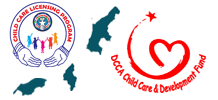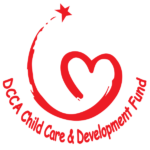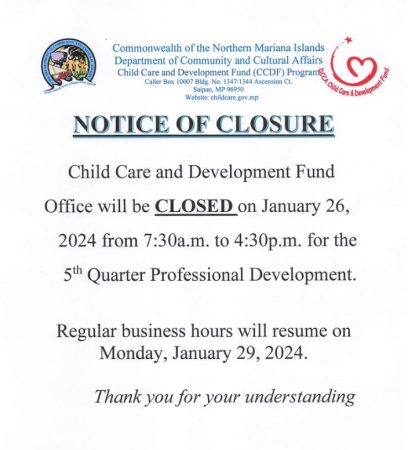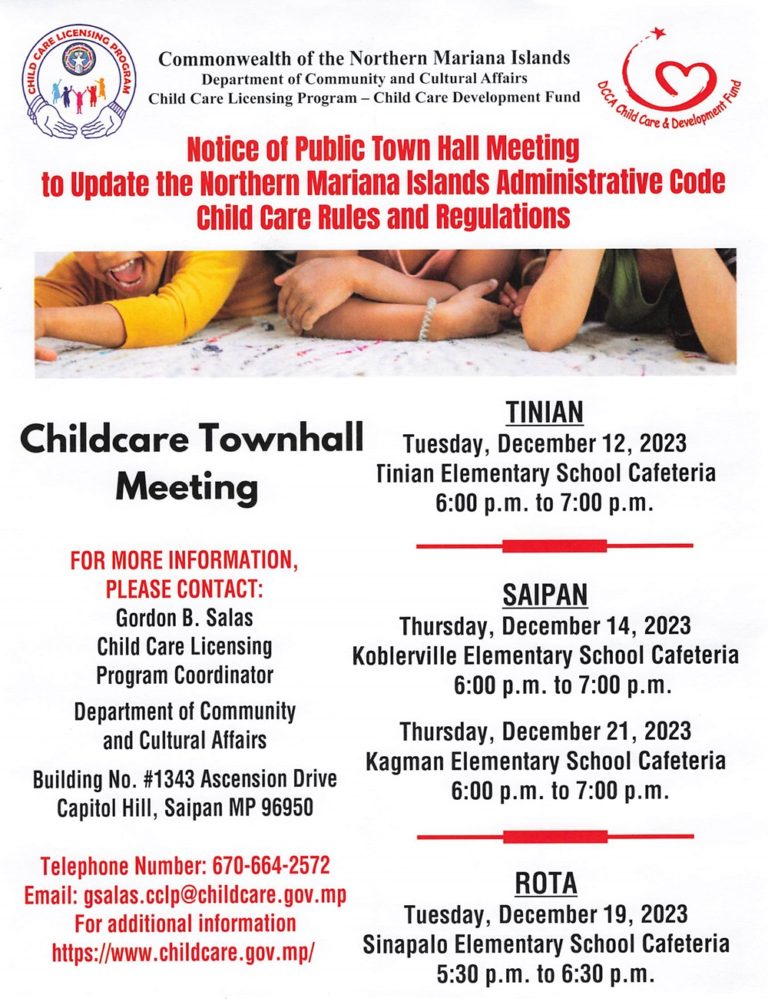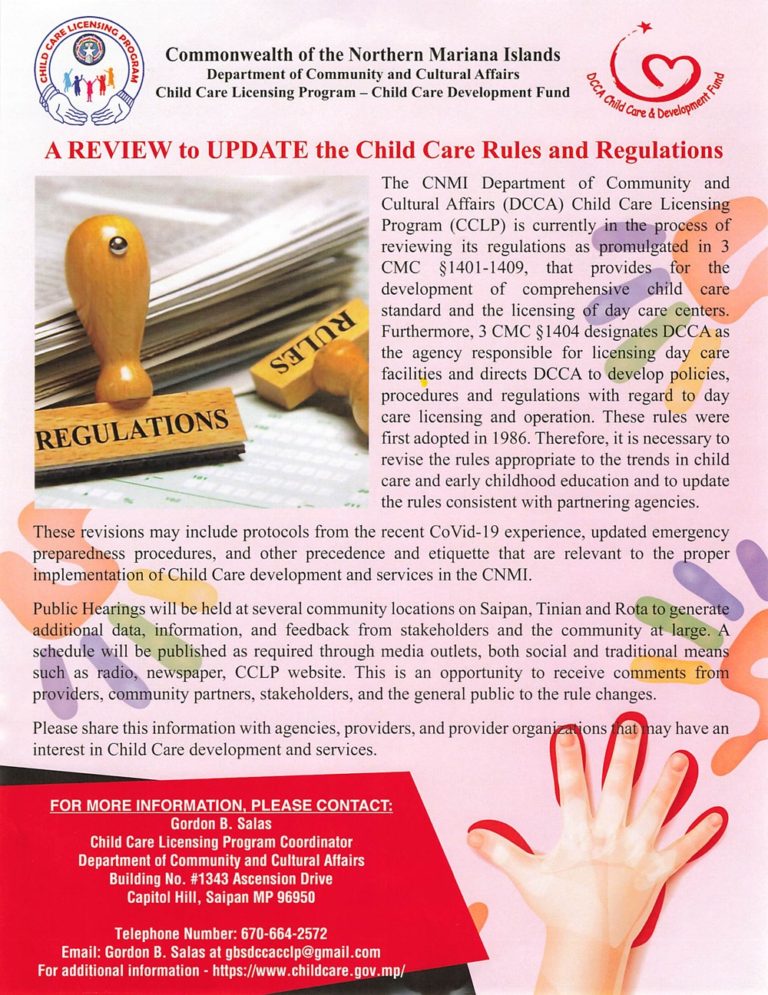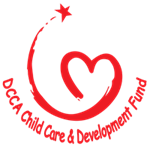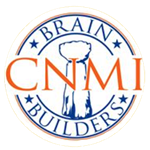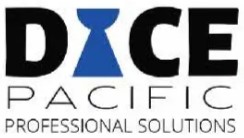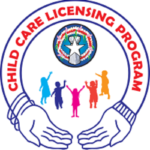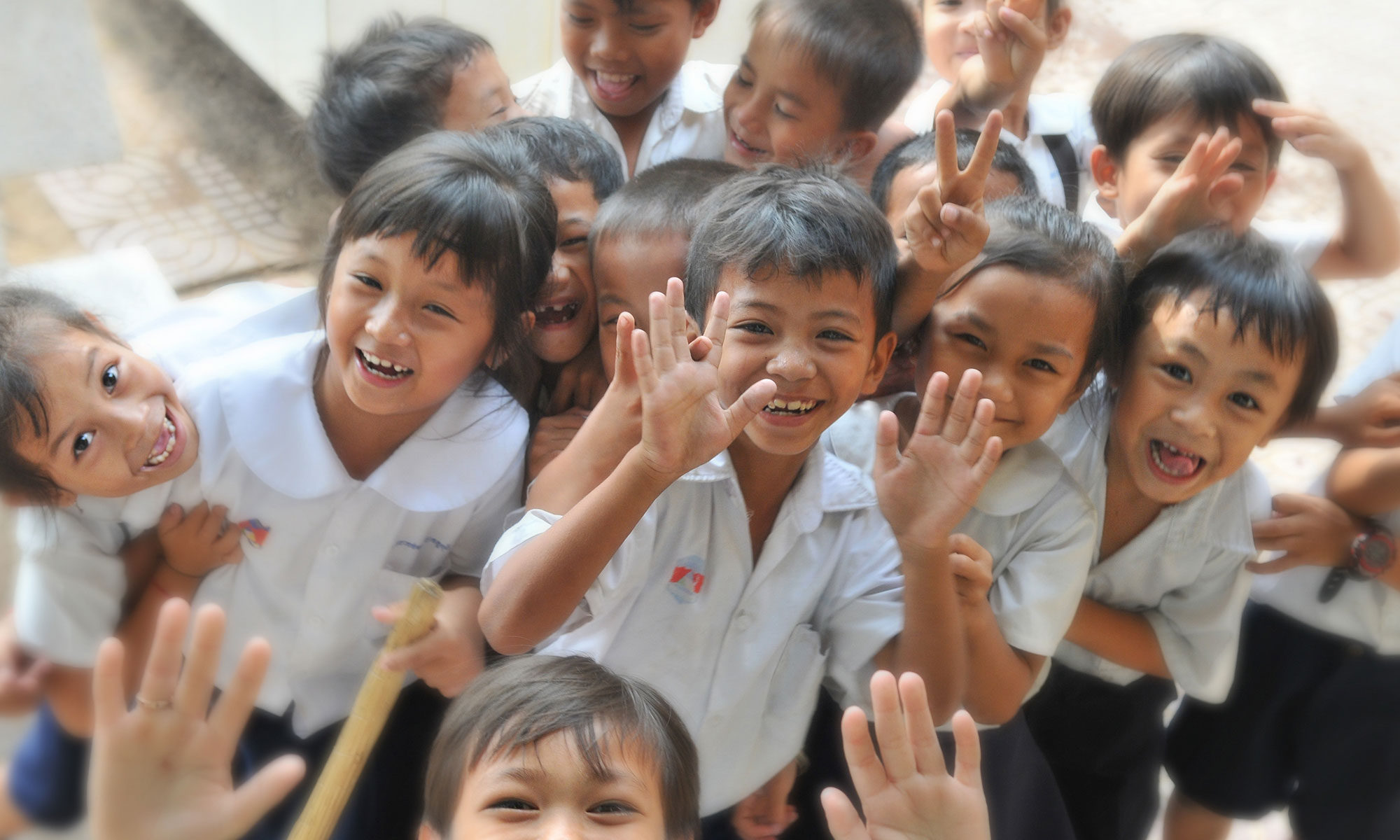
Focus Group meetings were held to clarify further the updates gathered and compiled from the various public hearings. This was an opportunity for each partnering agency to clarify comments based on their agency’s regulatory requirements.
Amended Response to Focus Group Meeting – Children with Disabilities.

- CCDF Subsidy office will be closed for CCDF Rota and Tinian Staff training and updates on Thursday-January 25, 2024
- CCDF Admin and Subsidy Offices will be closed on Friday-January 26, 2024 for Professional Development and will resume regular office hours on Monday-January 29, 2024.
FAQ: CCDF commonly asked questions
Child Care Subsidy
The Child Care Development Fund Program assists low income families in accessing quality child care for children while parents work or participate in education or job training. The program’s mission is to enhance the quality, affordability, and supply of child care available for all families.
Parent/s Eligibility
• Working at least 30 hours a week or is scheduled to start to work in 2 weeks.
• In job training at least 20 hours a week.
• Attending education on a full time basis.
• Has a monthly gross income that does not exceed Federal Poverty Income Guideline for a family of a same size.
• The family must be living in the CNMI.
Child’s Eligibility
• Resides with the parent who is in an approved activity (working, in job training or attending school)
• Be under the age of 13
• Must be a US Citizen or Qualified alien as defined in PRWORA.
Contact: (670) 664-2575/6/8/9 or (670) 664-2573
Located in Capitol Hill House No. 1347
Quality Rating and Improvement System (QRIS)
The Quality Rating and Improvement System or QRIS is a way to “assess, improve, and communicate the level of quality in early care and education settings. The CNMI’s QRIS called Reach Higher, CNMI officially launched a Pilot Program on July 18, 2016 with the orientation for pilot provider sites. Seven license-based centers were randomly selected to represent small, medium, and large sized operations. At the beginning of the process, CCDF decided ECERS-R scores obtained in 2015 would be used as the baseline scores for pilot sites. Thus, only ITERS-R scores were obtained for the initial visits in 2016. One infant or infant/ toddler room and one toddler room was observed at each pilot site.
Star Level 1, represents the most basic quality level. Meeting these standard indicators is a mere statement that a program meets the most minimal qualifications for running a child care business in the CNMI. In the first verification visits of 2016, five of the seven sites had issues with expired police clearances, floor plans, health certificates, and/ or missing documents that were required by CCDF and/ or the CNMI Licensing Program. A year after implementation, issues had been resolved and all seven pilot sites earned Star Level 1 quality standing.
At Star Level 2, an increase in the number of centers meeting standard indicators was noted. All sites completed their ERS self-assessments, posted developmentally appropriate schedules, made community resources available to parents, and communicated with parents in various ways. Five centers completely updated their parent handbook to meet all CCDF requirements. Three centers were unable to implement all safe sleep practices. Of the three, one would have earned Star Level 3 if it had met this indicator. Another three centers lost all star level standing beyond Star Level 1 due to licensing citations.
At Star Level 3, little change was noted in centers meeting health and safety indicators. Notable increases were observed in the number of centers completing ASQs, incorporating the Early Learning Guidelines in lesson planning, following IEPs for children with disabilities, and addressing their Quality Improvement Plans (QIPs).
At least six of the 11 indicators at Star Level 4 were attainable for more than half of the centers: four had no citations, six maintained age-appropriate staff-child ratio, five met QIP-targeted coaching hours, four received scores above one on the activities subscale of the ERS, all incorporated ELGs into lesson plans, and five provided opportunities for feedback from parents and staff in the form of formal surveys.
By the 2017 follow-up observations, only two centers are at minimum quality, as measured by the environment rating scales. All other centers surpassed the minimum required rating of 3.00 in Star Level indicators. In fact, these higher rated centers received total scores of 4.00 and higher.
Also notable are the 2015 ECERS-R score for preschool programs. Only two centers received scores in the 2.00 range during the first observations in 2015. Even then, most pilot centers were already attaining ratings above 3.00.
Overarching goals for improvement include:
• Meeting basic health and safety requirements (e.g. safe sleep practices, napping, diapering, meals/ snacks, indoor space) and monitoring children’s development.
• Engaging children in meaning interactions that include thick conversations and the development of higher-order thinking skills.
• Supporting children with disabilities and their families – including training staff in inclusive practices.
• Providing assistance to parents and families that help connect home and school/ center learning.
In the second year of the pilot, which began on December 2017, three more sites were added. Some changes to the Pilot 1 were included. A big difference is the star levels. From Pilot 1’s 4 Star Levels, for Pilot 2, there will now be 5 Star Levels. Some programs standards were also modified, changed, or deleted. Pilot 2 activities. Included the SACERS-U baseline observations. Data from the SACERS-U revealed inadequate quality in the following areas: adequate space and furnishings; health and safety requirements for meals/ snacks and personal hygiene; implementing activities for music/ movement, blocks/ construction, dramatic play/ theater, math/ reasoning activities, and science/ nature activities; and meeting the needs of children with disabilities. These areas also emerge as targets for overarching quality improvement goal.
FAQ: CCLP commonly asked questions
Once a center is issued a license to operate as a child care provider, the Child Care Licensing Program conducts two announced and two unannounced inspections annually followed by two monitoring inspections for the former and the latter respectively. This is done to follow-up on whether or not violation(s) if any, have been corrected pursuant to the Child Care Licensing Safety Inspector’s recommendation on any and all code violations. Shortly thereafter, the Safety Inspector will generate his or her report which will eventually be uploaded to the Child Care Licensing Program and the Child Care & Development Fund website.
In the Commonwealth of the Northern Mariana Islands, a day care center & group child care homes, before and after school programs may provide care to children age two years (twenty-four months) and older. A family child care homes may provide care for no more than six children at the same time. An infant and toddler child care centers shall provide care to children age six weeks and under twenty-four months. All of the above classification of care must be licensed by the Department of Community and Cultural Affairs’ Child Care Licensing Program.
A center is issued a license to operate after having met all the requirements of the Child Care Licensing Program’s Administrative Code inclusive of an initial inspection for new applicants and renewal inspection for ongoing applicants. The application to obtain a child care license to operate shall be made on forms supplied by the licensing office.
New applicants must settle all appropriate application fees before submission to the Office of the Child Care Licensing Program with the application for a child care license at least sixty calendar days prior to the opening date of the facility.
Before filing a complaint with the Department of Community and Cultural Affairs’ Child Care Licensing Program (“CCLP”), you should consider speaking to the facility’s director or supervisor who is responsible for the daily operation of the facility. Many situations can readily be corrected by speaking to the management. Even after filing a complaint with CCLP, you should still consider speaking to the facility management to see if the complaint at hand can be remedied or corrected.
How are complaints received by CCLP?
The Child Care Licensing Program receives complaints by email, telephone, regular mail, CCLP/CCDF website, walk-in, etc.
Who files complaints?
The Child Care Licensing Program receives complaints from parents, provider staff members, family members, private & government agencies, and just about anyone who is aware of a possible regulatory violation within the facilities of child care providers.
Who investigates the complaint once received?
A Child Care Licensing Program Safety Inspector conducts the investigation. They are experienced and have a foundational working knowledge and understanding of CNMI laws and the regulatory requirements of the program.
How are the complaints investigated?
The Child Care Licensing Safety Inspectors use their basic investigative skills to investigate complaints such as: conducting witness interviews; reviewing closed-circuit television (“CCTV”) footages, reviewing records, policies, observation, etc. Additionally, CCLP uses whatever methods of investigation that will result in the most efficient and effective outcome.
Regulatory requirement:
Pursuant to §55-40.1-135 Licensing Complaints – Child care facilities must provide written information to parents at the time of admission and staff members at the time of employment on how to file a complaint concerning suspected licensing violations. The information must include the complete name, mailing address, and telephone number of the Department of Community and Cultural Affairs, Office of the Secretary, Child Care Licensing Program.
CCLP CONTACT NUMBERS: 664-2572 & 664-4570
